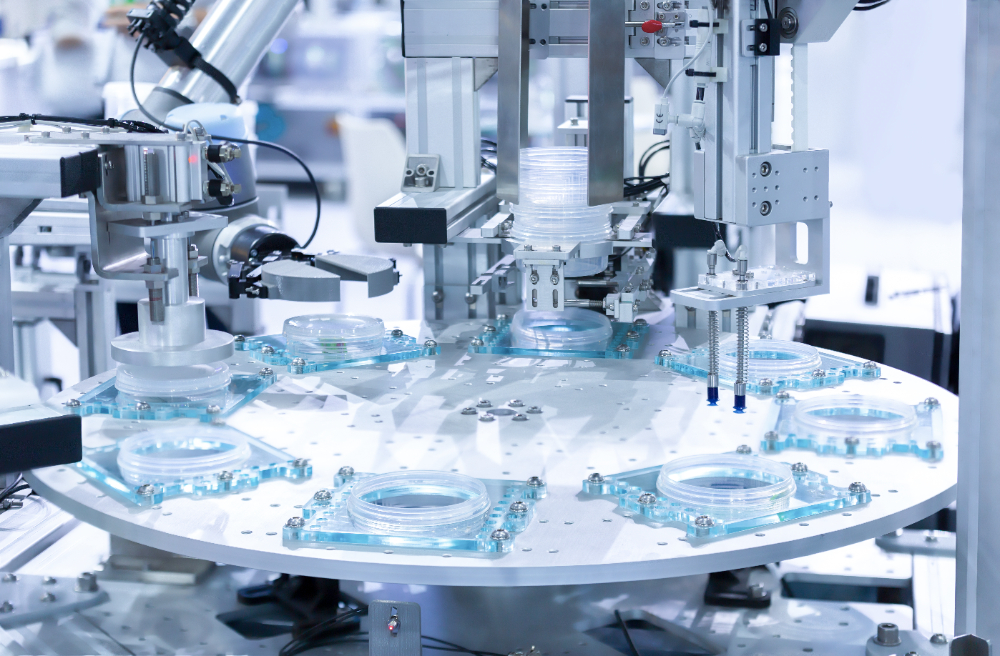Filling capsules is an essential process for manufacturers and supplement producers. Whether you’re producing small batches or running large-scale operations, understanding how to fill capsules efficiently is key to maintaining consistency and quality.

| Filling Method | Steps | Tips/Usage |
| Manual Capsule Filling | 1. Separate the capsule caps from bodies and place bodies into a filler tray. | – Best for small-scale production or personal use. |
| 2. Add powder into the capsule bodies. | – Ideal for home or small business. | |
| 3. Tamp the powder to ensure uniformity. | – Simple and cost-effective but time-consuming. | |
| 4. Attach the caps. | ||
| Semi-Automatic Capsule Filling | 1. Load the capsules; the machine separates the caps from the bodies. | – Ideal for mid-sized production. |
| 2. Add powder into the hopper; the machine fills the capsules. | – Offers increased speed and efficiency. | |
| 3. Align caps with bodies; machine seals them. | – Requires human intervention but is more cost-effective than automatic machines. | |
| Automatic Capsule Filling | 1. Load the capsules; the machine separates and organizes caps and bodies. | – Best for large-scale production. |
| 2. The machine automatically fills the capsules with powder, pellets, or liquids. | – Minimal human intervention. | |
| 3. Machine seals the capsules and ejects them. | – Handles up to 400,000 capsules per hour, suitable for pharmaceutical and supplement industries. |

Have Questions About Capsule Filling Solutions?
How do you fill capsules? To fill capsules, you can follow three main methods: manual, semi-automatic, and automatic. Each method varies in terms of speed, precision, and scale.
Manual capsule filling is a simple, hands-on approach that is ideal for small batches or personal use. Here’s a quick breakdown of the steps involved in how to fill capsules manually:
Separate the capsule into two parts—the cap and the body. Place the bodies into a filler tray, which holds them upright.
Most capsules range from 000 (largest) to 4 (smallest). Place the capsule bodies into the filler tray, ensuring that each one is securely seated.
Use a tamper tool to compress the powder into the capsules. Repeat the process until the capsules are filled to the desired level.
Use a tamping tool to compress the powder into the capsules. Repeat this process until each capsule is filled to the desired level. Tamping ensures that each capsule contains a uniform amount of powder.
Finally, place the capsule caps onto the bodies and gently press them together. Once the caps are securely in place, the capsules are ready for consumption or further processing.
Tips:
- Best for small-scale production
- Ideal for home use or small business
Semi-automatic machines are the middle ground between manual and automatic methods, commonly used in small to medium-sized production settings. They automate part of the process but still require some human intervention.
The machine sorts the capsules, separating the caps from the bodies, and places them into the filling tray.
Add the powder into the machine’s hopper. The machine spreads the powder into the capsules while maintaining accuracy and minimizing waste.
The operator aligns the caps with the filled bodies, and the machine seals the capsules together.
Semi-automatic machines allow for faster production than manual filling and are more suitable for small-scale businesses looking for greater efficiency.
Tips:
- For mid-sized production
- offer increased speed and efficiency while still being cost-effective
For large-scale production, automatic capsule-filling machines are the gold standard. These machines handle the entire process—from separating the capsule parts to filling, capping, and ejecting the finished product.
How do you fill capsules using an automatic machine? It’s all done with minimal human intervention.
The machine automatically separates the capsule bodies and caps, organizing them for filling.
The machine fills the capsules with the desired material—powder, pellets, or liquids—using precise dosing systems. Machines like the Canaan CFK Series feature integrated weight detection, ensuring that every capsule is filled with the correct amount.
Once filled, the machine aligns the caps with the bodies, seals them, and ejects the finished capsules for collection. Automatic machines can process up to 400,000 capsules per hour, making them indispensable in pharmaceutical and supplement production.
Tips:
- For large-scale operations
- High output and precision

What Are the Difference Between the Automatic Capsule Filling Machine and the Semi-Automatic Capsule Filling Machine?
Selecting the correct capsule size is crucial. Larger capsules can hold more powder but may be harder to swallow for some users. Common sizes include 00, 0, 1, and 2.
Accurate measurement of the powder ensures that each capsule contains a uniform dosage. This is particularly important in pharmaceuticals, where incorrect dosing can have serious consequences.
Keeping the workspace clean and organized helps to avoid contamination, especially in sensitive industries like pharmaceuticals and supplements.
Whether filling capsules manually or using automated systems, investing in reliable, high-quality equipment ensures consistency and reduces the risk of production errors.
Even with the best equipment, capsule filling can present challenges:
Filling capsules may seem simple, but the right method and tools can make all the difference. Whether you’re looking to fill capsules at home or in a commercial setting, understanding how to fill capsules properly ensures quality results every time.
If you’re looking to enhance your capsule production process, Canaan’s capsule-filling machines–which are GMP and CE-certified—offer the precision, speed, and reliability you need. With industry-leading technology, our machines are designed to meet the highest standards of pharmaceutical and supplement manufacturing.

Whether you need manual, semi-automatic, or automated solutions, Canaan’s equipment ensures accuracy, efficiency, and compliance with GMP and CE certifications. Take your production to the next level with our advanced machinery.

Explore more about Canaan’s capsule-filling machines and see how they can optimize your operations. Visit our website or get in touch with us today!




Manufacturing pharmaceutical products should always be taken seriously. That is, every process must follow the strictest and highest standards. This is the very reason why manufacturers prefer hiring an EPC contractor. Contractors working under EPC contracts will ensure the outcomes are of the best quality no matter what happens, focusing on the construction of the […]

Explore the importance of EPC contracts in pharmaceutical manufacturing. Learn how EPC works, its benefits, and why choosing an EPC contractor can guarantee project success with Canaan’s industry-leading equipment.

Discover how SCADA and PLC improve automation in the pharmaceutical industry. Learn their roles, benefits, and how Canaan’s advanced technology enhances efficiency and safety.